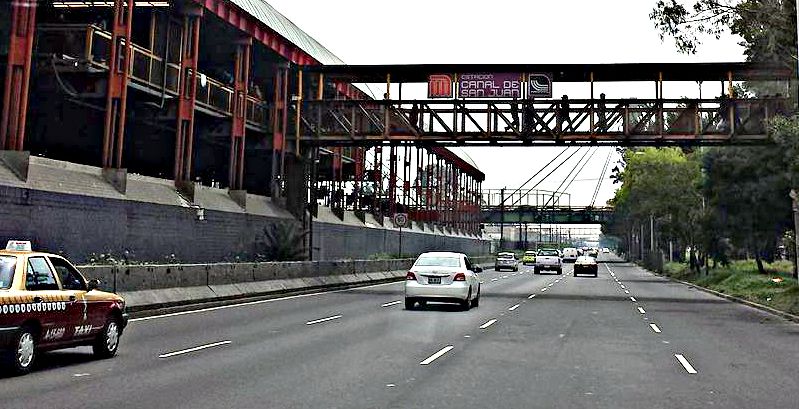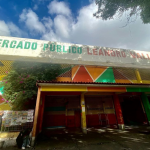
 Metro Canal de San Juan is a station on Metro Line A in the very east of Mexico City. The station is named for an ancient canal that once stretched all the way from Xochimilco to Texcoco in the east. It thus connected the agricultural heartland with the very furthest hinterlands of the Triple Alliance.
Metro Canal de San Juan is a station on Metro Line A in the very east of Mexico City. The station is named for an ancient canal that once stretched all the way from Xochimilco to Texcoco in the east. It thus connected the agricultural heartland with the very furthest hinterlands of the Triple Alliance.
Today the area gets noticed for the suspension bridge, visible from the station. It carries part of the Periférico Highway over the Calzada Ignacio Zaragoza. This stretch of the Periférico still bears the name of the Avenida Canal de San Juan.
The station serves, especially, parts of Agrícola Oriental and Pantitlán in Iztacalco. To the east of the station are parts of the colonias Tepalcates and Juan Escutia in Iztapalapa. The station is practically on the border between the two alcaldías. The former canal, though, ran south from here roughly along the route of the Periférico highway to today’s Constitución de 1917. As such, the canal played an important part in the history of Iztapalapa.
Practically right outside of the Metro Canal de San Juan, the Parque Escuela Urbano Ecológico Iztacalco (Iztacalco Urban-Ecological School & Park) holds reign. As the name implies, the park provides educational programs in ecological and conservation issues. It also features extensive facilities for kids.
Metro Canal de San Juan opened in 1991 along with the rest of Metro Line A. Today, about 12,000 workday regulars will move through the station daily. International visitors won’t be many among them. The Casetón, one of the best cultural centers in this part of the city, is roughly a ten-minute walk from the Metro.

Nearest at 0.58 kms.

Nearest at 1.24 kms.

Nearest at 1.38 kms.

The biggest busiest station in the Metro system, to not visit is to miss out on a very busy transit hub.

Mexico City's former farmland of the east...

Tepalcates takes its name from the Nahuatl word "tepalcatl", meaning earthenware.

A station borrows the symbol for the City's entire east side...

A station near the famous old peak in Iztapalapa...